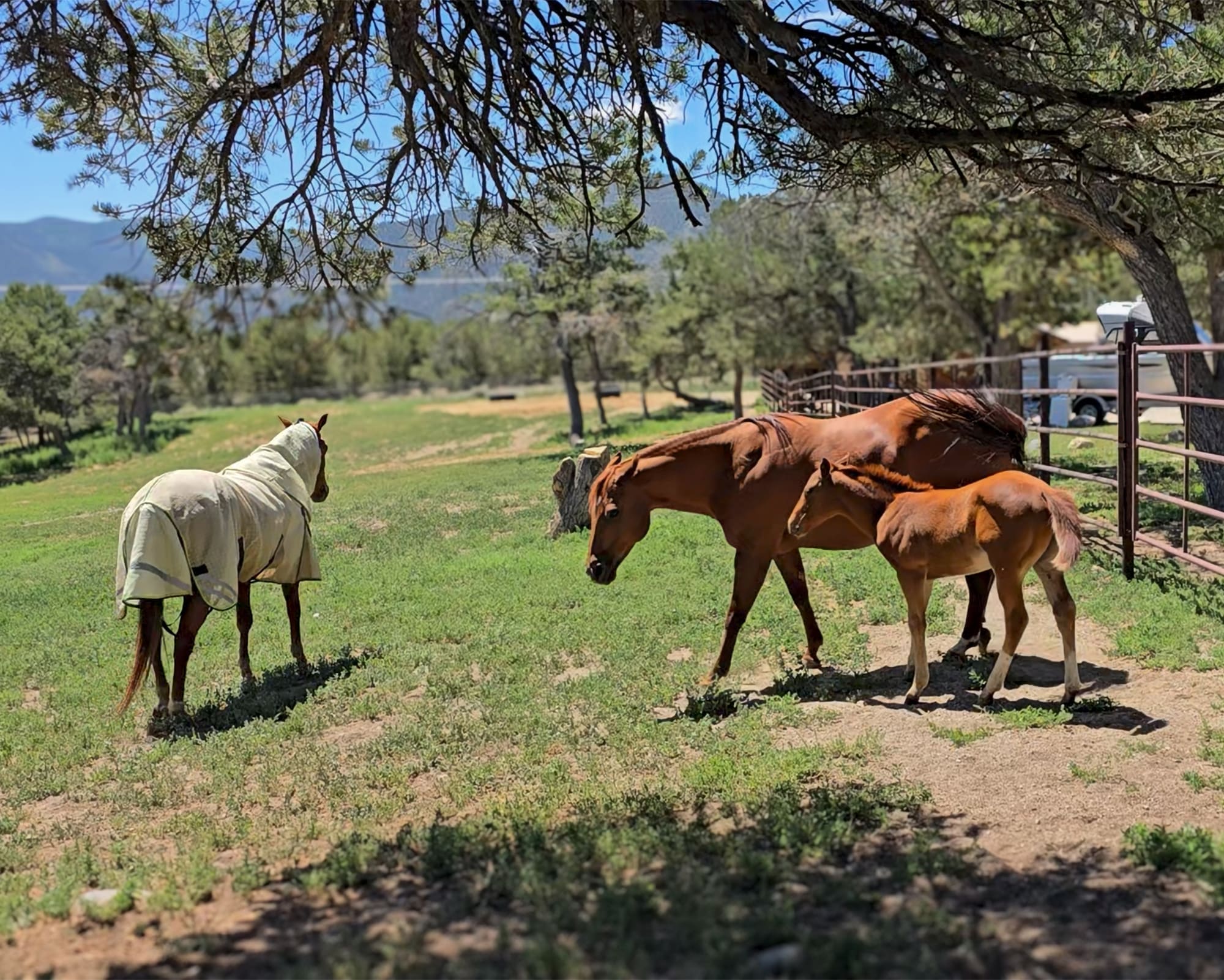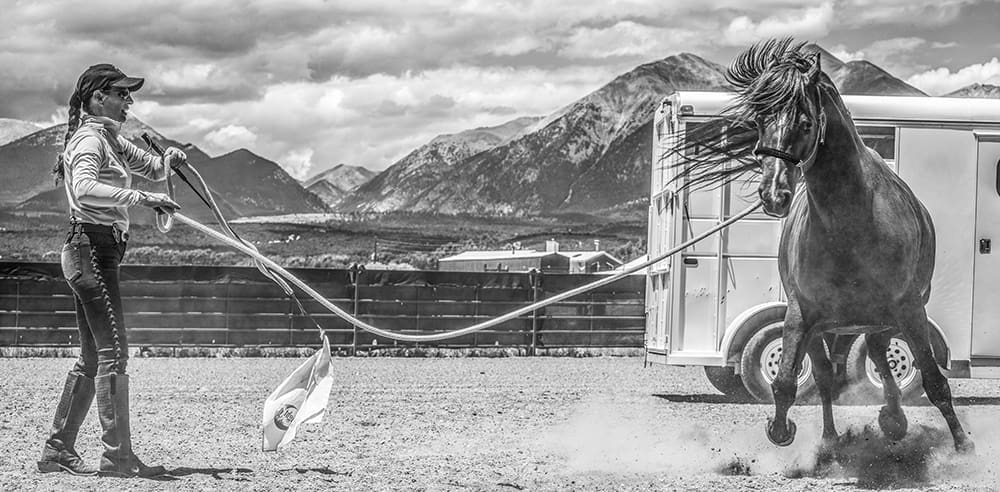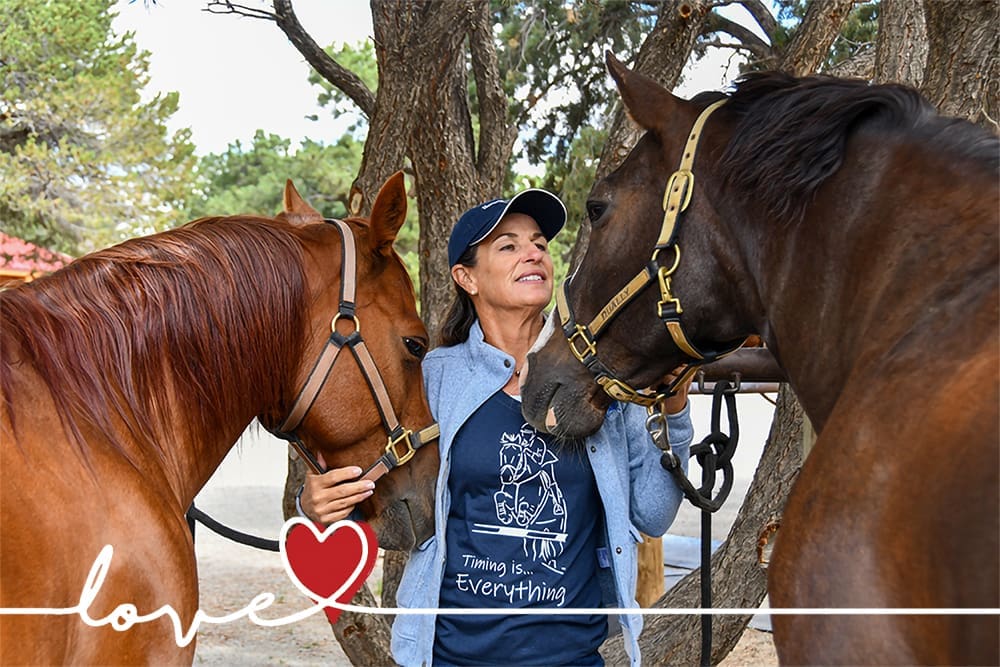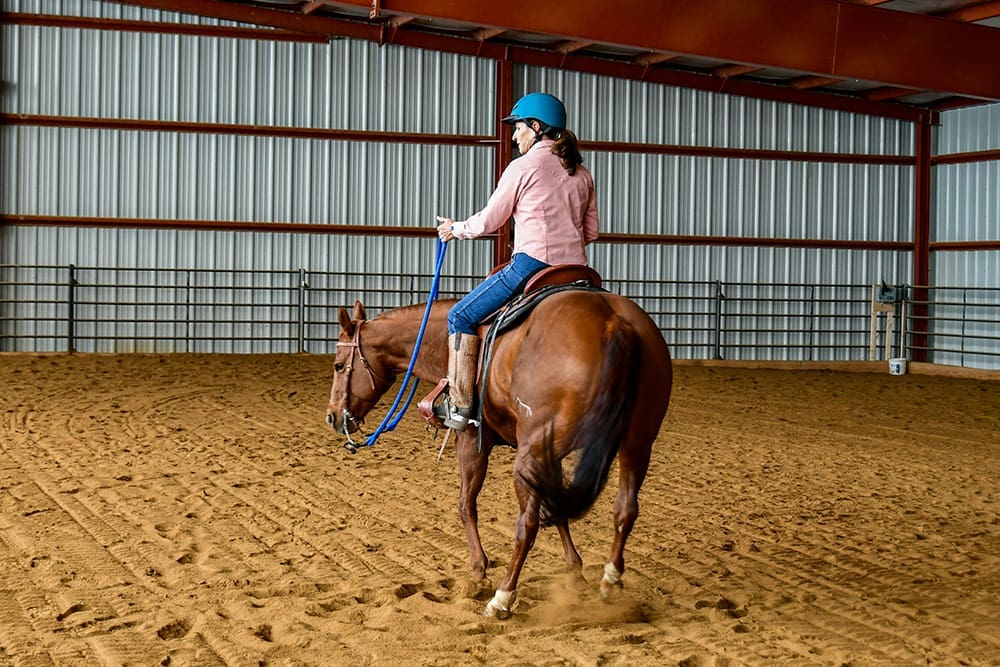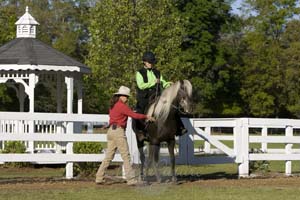 My film crew and I all converged in Savannah GA and made the 90 minute trek up to the SC coast, to a small private island called Fripp Island, where our accommodations for the week were. It is always good to have everyone together again—Heidi, the producer; Steve, videographer extraordinaire; Cheryl, wardrobe; Lucy and “T”, assistant trainers; and Carolyn, facilitator and “craft services” (she takes care of our meals and personal needs). We were also joined for this shoot by Jackie, who we hope will become part of our permanent crew, as key grip (the grips do anything and everything, taking care of loose ends and helping Heidi keep track of what has been filmed, the time codes and what needs to be done).
My film crew and I all converged in Savannah GA and made the 90 minute trek up to the SC coast, to a small private island called Fripp Island, where our accommodations for the week were. It is always good to have everyone together again—Heidi, the producer; Steve, videographer extraordinaire; Cheryl, wardrobe; Lucy and “T”, assistant trainers; and Carolyn, facilitator and “craft services” (she takes care of our meals and personal needs). We were also joined for this shoot by Jackie, who we hope will become part of our permanent crew, as key grip (the grips do anything and everything, taking care of loose ends and helping Heidi keep track of what has been filmed, the time codes and what needs to be done).
 It was very cool to be staying on the resort island, just off the beach, but frankly, we worked sun-up to sun-down and never had any time to enjoy the amenities. That’s sort of the story of my life. I go a lot of really cool places but rarely have time to sight-see or relax. But it still beats never going there to begin with.
It was very cool to be staying on the resort island, just off the beach, but frankly, we worked sun-up to sun-down and never had any time to enjoy the amenities. That’s sort of the story of my life. I go a lot of really cool places but rarely have time to sight-see or relax. But it still beats never going there to begin with.
We were filming at Camelot Farms; a boarding, lesson and trail ride facility, just a 15 minute drive from the island (they have an awesome beach ride). Our hosts, Anne and Mark Kennedy, were unbelievably warm and welcoming and their beautiful farm, in the SC “low country” provided a beautiful back drop for taping the show. They catered to our every need—right down to golf carts for the crew and a private trailer for me to change clothes in (which I do about 6-8 times a day during a shoot). It wasn’t a typical Hollywood trailer, but a living quarters horse trailers—right up my alley.
 This is the area of SC where much of “Forest Gump” was filmed and, in fact, the farm was located on the same road where the famous “Run Forest, run” scene took place. With beautiful live oak trees, draped in Spanish moss, palmetto and salt-water marshes, we were always oohing and awing over the scenery. As we drove back and forth from the island, we passed a dock for shrimp boats that was quite reminiscent of the movie.
This is the area of SC where much of “Forest Gump” was filmed and, in fact, the farm was located on the same road where the famous “Run Forest, run” scene took place. With beautiful live oak trees, draped in Spanish moss, palmetto and salt-water marshes, we were always oohing and awing over the scenery. As we drove back and forth from the island, we passed a dock for shrimp boats that was quite reminiscent of the movie.
As usual, we filmed six episodes in three days—Tue-Wed-Thu. Tuesday was the hardest day—weather wise. It was unseasonably cold (high about 52 degrees) and with high winds. We were all very cold the whole day, but since our schedule is so tight, we just had to work through it. So much for all the cute summery outfits I had—I wore my heavy coat the whole time. A soak in a hot bath back at the house never felt so good. Wednesday was hard too since that is definitely our “hump day” and it turned out to be cold as well. On Wednesday, we finish three episodes and start three more. We start filming at the very first ray of sunshine and we tape until the light is completely gone. It’s an arduous day and one that I am always glad to see come to an end.
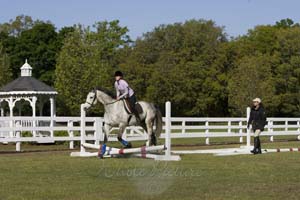 On Thursdays, all we have to do is end three episodes and then pick up miscellaneous stuff like commercials, voice-overs and background footage. Ending an episode is pretty easy—it’s only a 3-4 minute segment where I just follow-up after the person has practiced and give them a few things to work on in the future.
On Thursdays, all we have to do is end three episodes and then pick up miscellaneous stuff like commercials, voice-overs and background footage. Ending an episode is pretty easy—it’s only a 3-4 minute segment where I just follow-up after the person has practiced and give them a few things to work on in the future.
The toughest part of each episode is the beginning. First we film the “before” footage and that is where we figure out what exactly the show will be on. There’s not enough time in each episode to cover all of the issues, so we have to really narrow it down. Also, often the episode ends up being on a totally different topic than what we thought, based on the owner’s application. For one thing, often the problem is not really what the owner complained about, but something more fundamental that must be corrected before the real complaint can be addressed. And often, we cannot get the horse to display the “problem” behavior on demand. There’s something uncanny about a horse’s ability to be good when you say he’s bad and visa-versa. So we definitely have to roll with the punches.
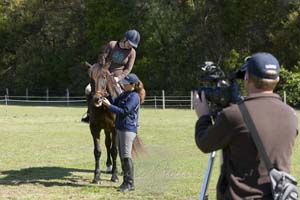 I think we got some really good episodes this week. We had a Rocky Mountain horse that needed to learn a pivot on the haunches to show successfully in Western Pleasure (not an easy feat in a gaited horse); and a rescued Thoroughbred that needed reconditioning after his bout with near starvation. Plus a young TB-Trakhener cross that was spoiled and rude and had learned to rip the line away and run-off while being longed. Then there was another TB that had no real behavioral problems but was a lazy horse and was not performing well enough to show in Dressage, as his owner aspired to. And yet another TB, fresh off the track, that was ready to start a new career as a Hunter and the owner needed to develop a plan for starting him over fences.
I think we got some really good episodes this week. We had a Rocky Mountain horse that needed to learn a pivot on the haunches to show successfully in Western Pleasure (not an easy feat in a gaited horse); and a rescued Thoroughbred that needed reconditioning after his bout with near starvation. Plus a young TB-Trakhener cross that was spoiled and rude and had learned to rip the line away and run-off while being longed. Then there was another TB that had no real behavioral problems but was a lazy horse and was not performing well enough to show in Dressage, as his owner aspired to. And yet another TB, fresh off the track, that was ready to start a new career as a Hunter and the owner needed to develop a plan for starting him over fences.
Finally, we had a QH mare that was throwing her head and running through the bridle—that turned out to be a bitting issue and once we changed bits and I did a little bit of schooling on her, she made a dramatic change.
All the best,
Julie
